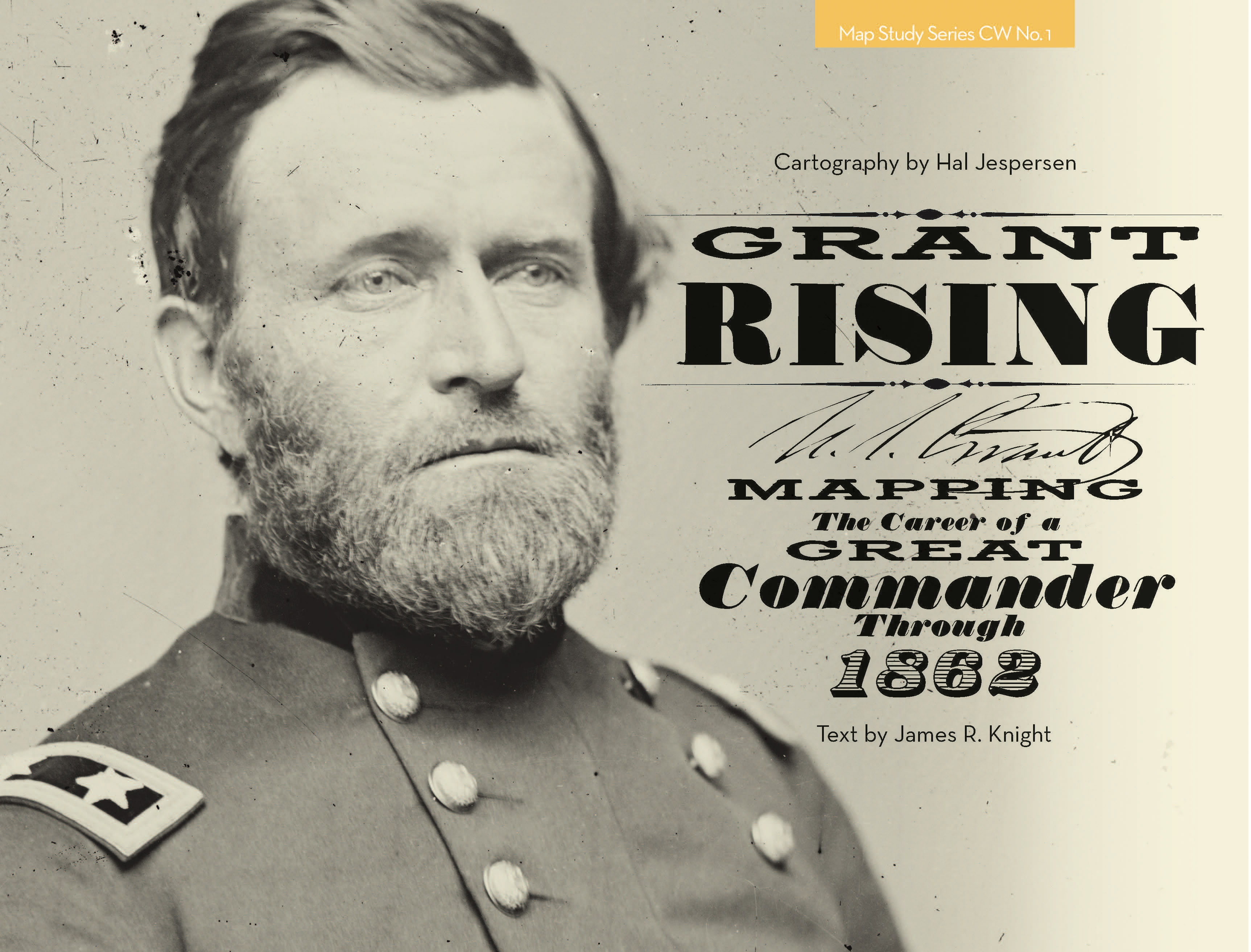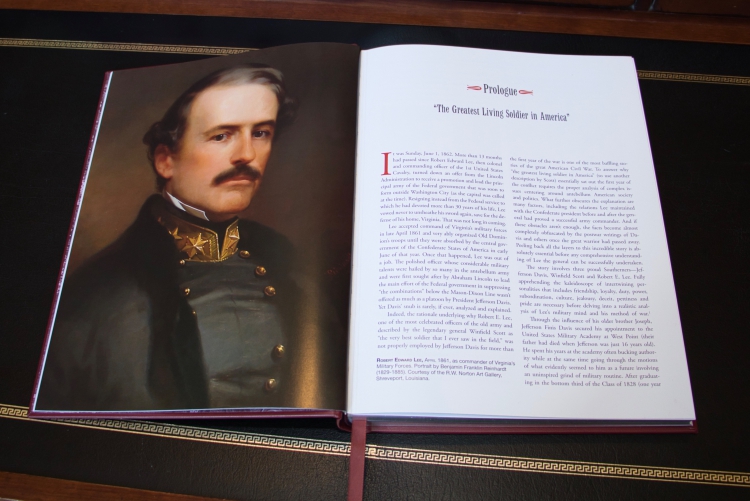Robert E. Lee at War:
Hope Arises from Despair
Robert E. Lee at War Series
by Scott Bowden Genre: History, Civil War
Legion of Honor PublishingPublished: 2017Hardback
320 + xi pages, 29 color maps plus a large fold out map, five appendices, annotated endnotes, index Reviewed by Dana Lombardy
☆☆☆☆☆
Full disclosure: This reviewer has known Scott Bowden since the 1970s and helped edit two of his Napoleonic books published in 2006 and 2009 by Military History Press.
Robert E. Lee at War: Hope Arises From Despair is a beautifully produced, full-color, large-format 9-by-12-inch art book. It has gold leaf leather binding, bound-in bookmark ribbon, and the page edges in gold foil. The collector’s edition of Lee also includes a gold leaf slipcase. It is the first volume produced by Legion of Honor Publishing.
This is an amazing book. Not only in the excellence of the binding and printing, but also in the well-researched and thoughtfully presented story of Robert E. Lee’s ascension to command in June of 1862 of what would arguably become the most important of the Confederate armies: the Army of Northern Virginia. Bowden used unpublished manuscripts, papers, and special collections as well as official records and memoirs.
Bowden acknowledges in his preface that the study of the American Civil War, and particularly Confederate leaders, is contentious today. However, these works provide important historical information vital to understanding why “The War” lasted so long. Bowden explains that “the careful study and analysis of the facts connected to Robert E. Lee’s military leadership—his mind and method—is the purpose of the Robert E. Lee at War series.”
During the Mexican War 1846-48 Lee’s abilities impressed Winfield Scott while Lee served under him. In 1861 Scott tried to get Lee to accept field command of the U.S. Army. Lee instead chose to serve his native state of Virginia. If Scott regarded him so highly, why was Lee so under employed for the first 13 months of the war? Although he was officially President Jefferson Davis’s advisor beginning in the spring of 1862, Lee only received a field command when Joseph E. Johnston was wounded during the fighting outside Richmond. The prologue by Bowden is a fascinating explanation that many readers may find surprising.
Part I includes the first nine chapters of the book and cover the Seven Days campaign which saved Richmond from capture by the Federal Army of the Potomac. It was an unprecedented turn around that Bowden’s exceptional storytelling describes using eyewitness quotes. Combined with the in-depth original analysis, this book is not your typical military history.
When Lee took command on June the 1st he inherited an army that was no better than an “armed mob” seriously lacking in discipline and cohesion. He met with his senior generals on June the 2nd, drastically improving the supplies and morale of the troops with personal inspections. He made repeated personal reconnaissances (as he did in Mexico), devised a counter offensive, and then executed it starting on June the 26th, not even a month after meeting with his division commanders.
Lee then fought five major battles in seven days, seizing the initiative in the campaign and driving the Federals from Richmond. It was a most remarkable accomplishment. Bowden shows how Lee’s methods and maxims were influenced by his study of Napoleon and other great commanders of history. Each of these battles employs multiple color maps and interesting sidebars such as the composition of the opposing artillery forces.
Part II includes the final three chapters of the book. This section is titled “Lee’s Art of War” and is the first to explain the underpinnings of Lee’s military philosophy. It also explains how he executed it in the areas of operational warfare and grand tactics on the battlefield.
The next volume in the series deals with Lee’s campaign and victory at the Battle of Second Manassas (Bull Run) in late August. This occurred just two months after the end of the Seven Days.
When President Lincoln asked Winfield Scott why 100,000 men could not take Richmond, Scott explained “The men who took us into the City of Mexico are the same men who are keeping us out of Richmond.”
Highly recommended.
Dana Lombardy
LombardyStudios.com

 The creation of Bull Run was a “proof of concept” project designed by Dana Lombardy in conjunction with the Chief Historians and Park Rangers at the Park and written by John Hill. It was enthusiastically endorsed by them, and we hoped it would be the first in the “American Civil War Notebook Series” of graphic booklets for other Parks—useful guides for visitors, reference material for wargamers, and user-friendly introductions to Civil War battles.
The creation of Bull Run was a “proof of concept” project designed by Dana Lombardy in conjunction with the Chief Historians and Park Rangers at the Park and written by John Hill. It was enthusiastically endorsed by them, and we hoped it would be the first in the “American Civil War Notebook Series” of graphic booklets for other Parks—useful guides for visitors, reference material for wargamers, and user-friendly introductions to Civil War battles.


